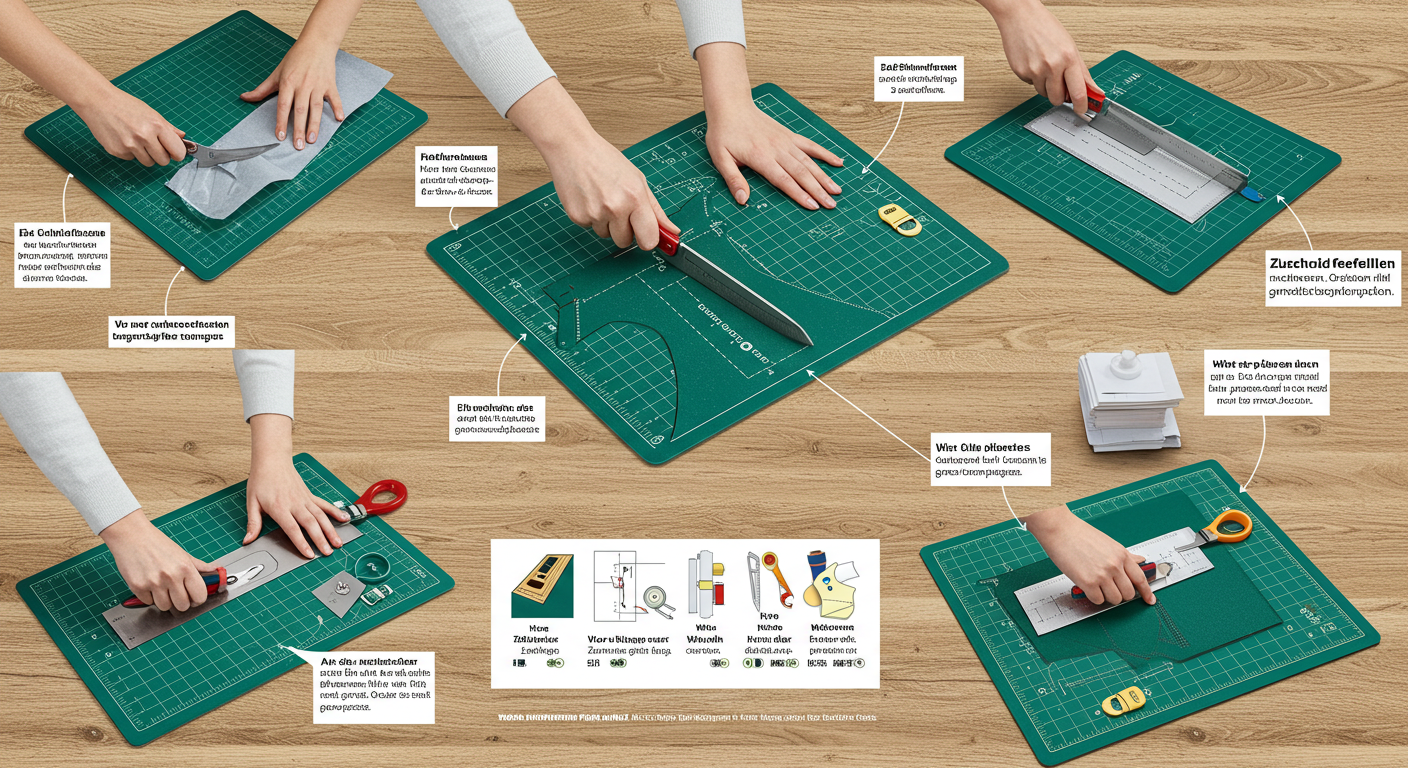ZuschneidfelleIn the world of tailoring, leatherwork, and precision cutting, few tools are as underrated yet essential as zuschneidfelle. This German term, often used in professional workshops, refers to specially designed cutting surfaces that assist artisans in achieving accuracy, durability, and efficiency. While many people focus on fabrics, machines, or sewing tools, the role of zuschneidfelle remains central for professionals who value quality results.
This article explores what zuschneidfelle are, their history, practical uses, benefits, and why they continue to be indispensable in today’s world of design and craftsmanship.
What Are Zuschneidfelle?
The term zuschneidfelle translates directly to “cutting furs” or “cutting hides” in English. Traditionally, they referred to specially prepared leather or hide surfaces used as cutting mats by tailors, shoemakers, and artisans. These surfaces provide a stable base that protects both the cutting tools and the work material.
Unlike ordinary boards, zuschneidfelle are resilient yet soft enough to prevent dulling the edges of knives, scissors, and rotary blades. Their unique texture allows for precise cutting without slippage, making them an important companion in any workshop where accuracy matters.
Historical Background of Zuschneidfelle
The origins of zuschneidfelle date back centuries, when craftsmen relied on animal hides as natural work surfaces. In the Middle Ages, tailors, leatherworkers, and armor makers used zuschneidfelle to cut fabrics, leather, and even fine metal sheets. Over time, the material evolved. Modern zuschneidfelle may still use natural leather but are also crafted from advanced synthetics designed to mimic the traditional properties of hide.
This historical continuity shows how effective and durable these surfaces have been across generations.
Why Zuschneidfelle Are Essential in Tailoring and Craftsmanship
1. Precision in Cutting
One of the most significant advantages of zuschneidfelle is their ability to provide a stable base for accurate cutting. Tailors can lay out patterns and trim fabric with confidence, knowing the surface prevents unwanted movement.
2. Protection for Cutting Tools
Cutting tools are an investment, and blunt edges can ruin both tools and materials. Zuschneidfelle extend the life of knives and scissors by offering a forgiving surface that minimizes wear.
3. Durability and Longevity
Compared to ordinary mats, zuschneidfelle are exceptionally durable. Many artisans keep a single surface for years without replacement, making it a cost-effective choice.
4. Versatility Across Crafts
Whether it’s tailoring, shoemaking, leatherworking, or even modern DIY projects, zuschneidfelle adapt to various needs. They provide a dependable surface for projects ranging from delicate fabrics to thick hides.
Types of Zuschneidfelle
Natural Leather Zuschneidfelle
Traditional versions are made from tanned animal hides. They remain popular among artisans who value authenticity and the natural grip of leather.
Synthetic Zuschneidfelle
Modern workshops often use synthetic alternatives. These provide consistent quality, are resistant to humidity, and are easier to source.
Customized Zuschneidfelle
Some professionals order zuschneidfelle cut to specific sizes or treated for certain textures, depending on their craft.
How to Use Zuschneidfelle Effectively
-
Choose the Right Size – A zuschneidfelle should be large enough to accommodate your project but not so big that it becomes cumbersome.
-
Keep It Clean – Dust, fabric threads, or leather scraps can reduce accuracy. Regular cleaning keeps the surface efficient.
-
Store Properly – Avoid moisture, excessive heat, or direct sunlight to preserve the material.
-
Pair with Sharp Tools – A zuschneidfelle works best with well-maintained knives or scissors, ensuring smooth and effortless cuts.
The Role of Zuschneidfelle in Modern Design
Despite technological advancements, zuschneidfelle still play a critical role in professional workshops. Fashion designers, shoemakers, and upholsterers rely on them for clean cuts that digital machines cannot always achieve. Even in hobbyist communities, zuschneidfelle are gaining popularity because of their durability and contribution to precision.
In sustainable fashion and leather crafting, where every material counts, minimizing waste through accurate cutting is vital. Zuschneidfelle ensure that every piece of fabric or hide is used efficiently.
Where to Find Quality Zuschneidfelle
If you are looking to invest in a consider specialized craft suppliers, tailoring equipment shops, or online stores that cater to professional artisans. Many manufacturers now offer eco-friendly and synthetic alternatives, ensuring that traditional craftsmanship can coexist with modern environmental standards.
Benefits of Investing in Zuschneidfelle
-
Improved accuracy in every project
-
Extended lifespan of cutting tools
-
Sustainable choice with long-lasting materials
-
Enhanced workflow in tailoring and design projects
-
Professional results that separate skilled craftsmanship from amateur work
Conclusion: The Timeless Value of Zuschneidfelle
While often overlooked remain an essential part of tailoring, leatherworking, and precision crafts. Their unique balance of durability, precision, and versatility makes them a worthy investment for professionals and hobbyists alike.
From historical origins in medieval workshops to modern design studios prove that some traditional tools never lose their relevance. By incorporating them into your craft, you not only protect your tools and materials but also uphold a tradition of precision and quality.
